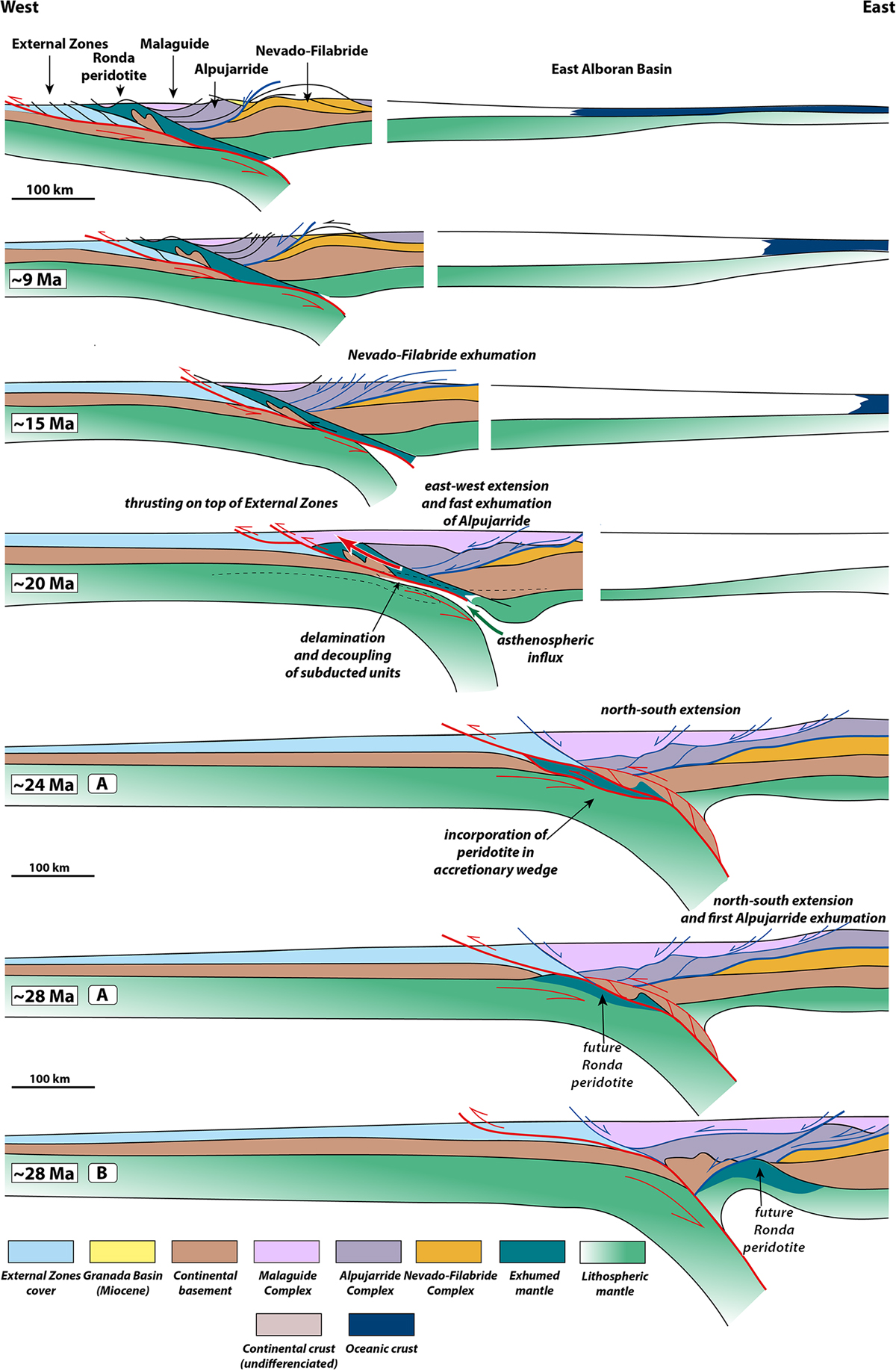Fig. 16

Download original image
Reconstructions along an E-W profile of the evolution of the Betic Cordillera from 28 Ma to the Present. The two 28 Ma stages represent two contrasted interpretations of the initial position of the Ronda peridotites, as discussed in text, as a piece of subcontinental mantle exhumed either during the Mesozoic rifting (interpretation B) or during the Oligo-Miocene back-arc extension (interpretation A). The 24 Ma stage incorporates interpretation A. During the later evolution (20 Ma stage) the slab of detached peridotite overthrusts the rifted basement situated further west and drags a piece of this basement underneath. At 20 Ma the subducting slab is also delaminated, or detached, triggering an influx of hot asthenospheric mantle below the thick crust, making its exhumation easy and leading to an episode of HT-LP metamorphism and anatexy. The entire Betic-Rif internal zones are exhumed at this stage. During the westward migration of the Alboran domain the crust in the back-arc region thins, breaks and is replaced by the oceanic crust of the Algerian Basin.
Current usage metrics show cumulative count of Article Views (full-text article views including HTML views, PDF and ePub downloads, according to the available data) and Abstracts Views on Vision4Press platform.
Data correspond to usage on the plateform after 2015. The current usage metrics is available 48-96 hours after online publication and is updated daily on week days.
Initial download of the metrics may take a while.




